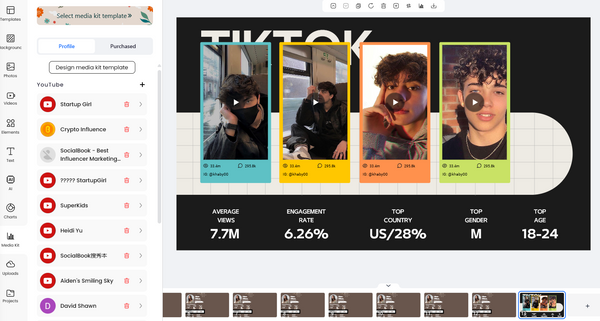Are you curious about boosting your brand’s credibility and increasing its visibility? In today’s digital-first world, online reviews are powerful; they shape buying decisions, build trust, and enhance your search rankings. Think about it: whenever we’re interested in something new, we instinctively check reviews to judge a brand’s authenticity and performance. That’s why knowing how to ask for reviews effectively is a game-changer. It’s not about being pushy, it’s about being strategic and sincere. In this blog post, we’ll walk you through the best practices, proven methods, customizable templates, and even show you how to respond to both positive and negative reviews with confidence.
Let’s dive in and unlock the full potential of customer feedback!
Introduction
We live in a time where digital word-of-mouth drives buying decisions and fuels sales. Today, customer reviews and feedback are essential pillars of brand trust. Think about it, when you come across a new brand online, what’s the first thing you do? You check its credibility. With the rise of e-commerce and global connectivity, it's easier than ever to make purchases, but also easier to fall victim to scams. This reality has made consumers more cautious and placed greater pressure on brands to prove their authenticity.
Naturally, the next step for any cautious buyer is to read online reviews, seeking honest feedback about the product’s quality, usefulness, and overall customer satisfaction. For potential buyers, star ratings, comments, and testimonials serve as powerful proof that your brand is trustworthy. In fact, according to research, 46% of people trust online reviews as much as personal or friends and family recommendations, and 60% of online shoppers rely on customer feedback before making a purchase. Therefore, it is harmless to say that online reviews derive sales for you and bring in potential customers.
But reviews are more than just public opinion. They are a mirror reflecting your brand’s strengths and areas for improvement. They offer actionable insights, highlight what’s working, and point out where you can do better. In short, customer reviews don’t just shape perceptions, but they shape your business growth.
Even knowing the importance of reviews and their direct impact on business growth, brands are still hesitant to ask for reviews. The constant burden of not annoying customers that drives them away, or sometimes brands have a ‘we don't care attitude’ that stops them from receiving the benefits of this super influential and proven marketing strategy. It has been noted that even the best brands are clueless when it comes to gathering customer reviews and feedback, or they don’t put much effort into understanding customer behavior.
For a business owner, their customers are the pillars holding the roof of the business; therefore, taking their feedback into account not only makes them feel heard but also enhances the visibility of your brand.
The fear of coming off as pushy or simply not knowing the right approach can hold back even the best brands. The good news? With the right approach and a clear strategy, requesting customer reviews is as simple as it can be imagined. It is just a matter of understanding when to ask and what to ask without exerting pressure on customers.
Why Ask for Reviews?
So, the most popular question often asked is, “Why ask for reviews when customers have successfully closed the deal after purchase and are satisfied?” The answer lies in the fact that this is the modern age of visibility and competition. To be at the top of the market, you have to excel in every field, and that can only be done by being the customer’s favorite brand. It has been observed that organic reviews are often very limited and do not reflect the overall customer experience. There are several reasons behind a buyer not posting a review themselves, such as:
- They forgot to post.
- They don’t think it is important to give a review.
- Lack of time.
- They are not very enthusiastic or expressive even when they love the product.
Therefore, asking for a review in a polite manner is extremely important as it helps to gather substantial social proof of your brand’s credibility and trustworthiness.
Asking for customer reviews isn’t just about collecting compliments; it’s a strategic move that benefits your brand in multiple ways. Here’s how:
1. Marketing Boost: Turning Reviews into Revenue
Customer reviews and feedback are equivalent to authentic testimonials across different marketing channels. Launching campaigns to make your customers feel heard and important is the most crucial step in uplifting your brand. Whether it is your website, email campaigns, social media platforms, or digital ads, it is equally important to show presence. And here’s how authentic online reviews are the best tools. They serve as the social proof that helps others to trust your brand and become loyal customers. It is said that reputation depends on your actions and good words coming out of a person's mouth. So, in this modern digital era, what people write on open platforms decides your future as a business owner. Highlighting 5-star experiences and showcasing satisfied customer stories can significantly increase engagement and conversion rates.
2. Honest Feedback: Learning and Improving through Opinions
Criticism is not always bad. Sometimes businesses get overwhelmed by the negative reviews and feedback, and tend to turn off the commenting section or block the review section. But trust me, negative comments are not necessarily bad. Sometimes they help to improve you, and can even help to turn bad customers into good customers by improving yourself and providing them the experience that they encourage.
3. Customer Relationship: Build Loyalty through Engagement
Asking for reviews is not just asking your customers to give something but it is an invitation for them to be a part of your brand story. This makes your customers feel welcomed and involved. This is not just seeking validation from them but it shows that you care about their opinion. A simple and polite request for customer’s opinion make them feel valued and involved. Moreover, responding to their reviews is also a very important step in building relationships as it gives it a touch of personalization, making them feel happy. Engaged customers are more likely to return, recommend you to others, and remain loyal over time.
4. Building Trust: Customer Satisfaction and Loyalty
Your brand image must be analogous to trust and credibility. In this age when scams and fraud have become so common, it is extremely crucial to distinguish yourself in the market. According to research, almost 70% of customers are more likely to buy from the brand they already know and trust. Trust can be built using transparency, user-generated content like reviews, feedback, star ratings, and customer experiences. Positive feedback is reassurance for potential customers that the brand they trust is the right choice and can deliver according to their expectations.
5. SEO Benefits: Improve Search Rankings
In today’s world, where AI is dominating, search engines still look for fresh and user-created content that is raw, authentic, fresh, and relevant. Regularly receiving reviews from customers helps to keep your website visible across all platforms. It also tends to improve the keyword density since customers use the same words. All these factors result in enhanced SEO optimization and performance. The more reviews you receive from your customers more your brand becomes visible and discoverable.
Best Practices for Asking Reviews
Knowing how and when to ask customers for reviews is the whole point in elevating the game. It draws the line between being ignored and getting a glowing testimonial. The following are the four best practices that will help you to maximize your brand’s activity and make it more credible in the eyes of potential customers.
1. Timing: Ask Right after a Positive Experience
Curating an algorithm that hits your customers at the right spot at the right time is all your brand needs. The best time to ask for the review is when your customer has had a positive experience with your brand, be it a successful purchase, smooth delivery or robust customer support. This is the perfect time, as they are very happy with your services, and excitement is in a rush, and when you ask them for a review, they are more than happy to share their kind thoughts. This is very important for boosting your visibility. Don’t wait too long, or the excitement might fade.
Pro Tip: For service-based businesses, send the request shortly after the job is completed. For product-based businesses, follow up a few days after delivery.
2. Make it Personal
Avoid generic or automated follow-up requests. Try to be as polite and as personal as possible. It is very important to make customers feel that they are being heard and prioritized. It is human nature that we tend to respond to the requests that are more personal and genuine. Instead of sending out to general requests, make a deliberate effort to tailor your review request according to customer details such as name, order number or anything that is particularly related to that customer. This little effort shows that you value your customers more than anything.
For instance:
Hi Sarah! We hope that you are really enjoying using your daily treat! If you have a moment, please share your valuable thoughts with us so that we will be able to make your experience more comforting and bring you the services that you like :)
3. Make it Simple: Avoid complexity
Make it easy and quick for your customers to leave reviews. One of the core reasons why customers hesitate to leave a review because the process feels so complicated and rigorous. It is advised to reduce friction by providing direct links to your customers for your review pages, such as Google, Yelp, Trustpilot, etc. Avoid strong words and long messages. Just write a short and easy-to-interpret message that is inviting your customers to quickly share their thoughts.
4. Follow Up: Gentle Reminders Go the Long Way
It is understandable that people simply forget to post a review as they tend to get busy. So, a gentle follow-up that does not look pushy is always encouraged and sometimes appreciated by customers as well. The key is to be courteous, not persistent. Respect their time and space, and always include a way to opt out of future requests.
Four Methods to Ask for Reviews
No matter your business size or industry, it always boils down to the fact of how you ask customers for reviews and seize the opportunity to grab their attention. The key is to choose the methods that best sit with your brand ideology at that particular point in time. Here are the four most authentic and genuine methods to escalate your review collection:
1. Email Requests
Personalized emails are one of the most suitable methods to ask customers for reviews. Since it is the most scalable and effective way to request for reviews. When crafted properly, it shows credibility and appreciation. When crafted properly, it has the ability to attract customers without overwhelming them.
Pros:
- Easy to personalize.
- Has the ability to be automated, which saves time.
- Non-intrusive and professional.
- Escalate the response rate.
Automation Tools:
There are certain platforms like MailChamp, Xavier, or Zapier that can automatically trigger and send out review emails to the customers. This is normally done once the product has been delivered or post-purchase. For better and specialized solution there are Yotpo or Trustpilot which are most widely used platforms. These are offer integrated into the review collection systems.
Template:
Here is the most effective email template for review generation:
Subject: We’d love your feedback!
Body:
Hi [Customer Name],
Thank you for choosing [Your Business Name]! We hope you’re loving your experience. If you have a moment, we’d be truly grateful if you could leave us a quick review—it only takes a minute and helps us grow.
[Leave a Review Button/Link]
Thank you for being a valued part of our community!
– The [Business Name] Team
This is very simple, concise, and straightforward, yet the most effective way of asking for reviews.
2. Phone Calls/ SMS
This sounds annoying way of reaching out to customers but trust me if utilized properly and effectively it is one of the effective way of reaching out to customers. Speaking directly with a customer via phone or SMS, it builds strong relationships with customers that can be cherished forever. It gives the leverage of politely asking for the reviews right after the moment of satisfaction such as resolving an issue or delivering the product.
Pros:
- Personalized and Engaging
- Higher Conversion Rates
- Customer Satisfaction
Phone Call Tip:
During a friendly conversation, ask customers,
“I am happy to learn that you enjoy your overall shopping experience! If you don’t mind, would you be open to sharing your experience in a quick online review? It really helps us.”
It is always recommended to be as precise and polite as possible.
Automation Tool:
Use CRM platforms like HubSpot, Salesforce, or Twilio to automate SMS follow-ups after a completed transaction or appointment.
3. Social Media
Social Media is a trend these days and they are the most customer-friendly platforms. People spend most of their time on social media platforms and are continuously engaging and looking for their favorite stores. Hitting the right spot at the right time is all that you need. Having a solid presence is very important to catch the customer's attention.
It is encouraged to try the following methods:
- Public posts: Curate posts that appreciate customers and request them to leave a positive review.
- Post Stories: Add the easy link to review generating websites by adding links in the public stories. Make the process as simple as possible for your customers to grab their attention without making them feel that they are wasting their time.
- Direct Messages: Create personalized messages and send them personally in the inbox.
- Contests and giveaways: Run a campaign where users share reviews or content for a chance to win a discount, feature, or prize.
Pros:
- High visibility
- Highly interactive
- Great for real-time feedback
- Highly engaging
Automation Tools:
Use Hootsuite, Later, or Buffer to schedule review request posts or monitor brand mentions so you can follow up with happy customers.
4. Website
The website plays the most crucial role in boosting the reviews and enhancing the brand’s image. Visitors on your website have already developed a relationship with your brand and trust you so you must take full advantage of the opportunity and maximize the results. Encourage them directly to leave a comment or feedback, minimize the friction, and allow you to skyrocket your review strategy by staying within your ecosystem.
Methods to collect reviews:
- Embedded forms
- Video Testimonial Tools
- Dedicated Review pages
- Automatic pop-ups for reviews.
Pros:
- Full control over time, design, and customized user experience
- Enhanced side credibility
- Seamless integration with other marketing tools
- Well-organized marketplace with real time reviews
Example Prompt:
“Tell us what you think! Your feedback helps us improve and inspires others. Leave a quick review below.”
Templates and Examples
Using the right words at the right time is all that is needed to gather quality customer reviews to build trust and the brand image. Here are some free templates for you, which you can use and tailor according to your cause:
1. Email Review Request Templates
Template:
Subject: Your chance to express your views! 💬
Body:
Hi [First Name of the Customer],
Thanks so much for choosing [Business Name]! We hope you’re enjoying your [product/service]. If you have a moment, we’d be thrilled if you could leave us a quick review—it really helps others discover us and helps us improve.
[Leave link to your review page or website]
Thanks again for your support!
Your Team,
[Your Name]
2. Phone Call/ SMS Template
Template for a Phone Call:
Verbal:
Thanks again for shopping with us/using our service! If you were happy with your experience, would you mind leaving a quick review? I can text you the link if that’s easier.
Template for SMS:
Written:
Hi [Customer Name], we really appreciate your time and thank you so much for your recent purchase with [Brand]! We'd love to hear your thoughts. Please take 30 seconds to leave a review [link to your website].
Appreciate your support!
3. Social Media Template
Create Casual and community-focused posts.
Template:
Have you tried our products? Share your thoughts with us about your overall experience!
We look forward to hear from you.
Bonus: Tag us with your experience using #YourBrandExperience, and you might be featured on our page!
4. Website Review Templates
These templates should be simple, and action-driven. This could include on-site prompts or thank you message pop ups.
Template:
Thank you so much for shopping with us! Please leave your review and enjoy 5% discount on your next purchase!
Or,
We hope you loved your experience! Could you take 30 seconds to leave us a review? Your feedback helps us grow and serve you better.
[Star Rating + Comment Box / Review Form Link]
Bonus Tip: Add a subtle “Review Us” call-to-action in your site’s footer or navigation bar.
Conclusion
This is the era of the digital marketplace where customer reviews are more than just mere rankings. It would be right to say that they are public endorsements that can derive growth and build trust, helping brands to strengthen themselves and bring a positive change. It is a secret weapon to build trust and optimize SEO, but all you have to do is ask at the right time and in the right place. It is the best opportunity to trust loyal customers into vocal brand advocates, promoting you and generating revenue. It is encouraged to use a mix of methods such as emails, SMS, Social Media, and your website.
Also don’t forget to use automation tools properly! Automation tools like Mailchimp, Zapier, or Famewall can enhance and simplify the process while keeping your review requests warm, friendly, and personal. Customer attraction is the key to converting likes into reviews into revenues.
Now you know how to ask your customers for reviews in a smart way and watch your credibility, customer loyalty, and conversions grow.







